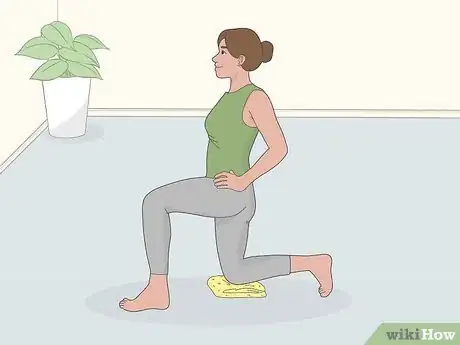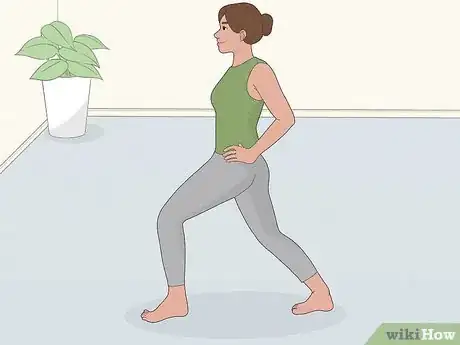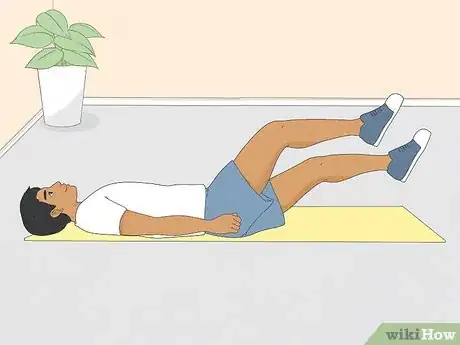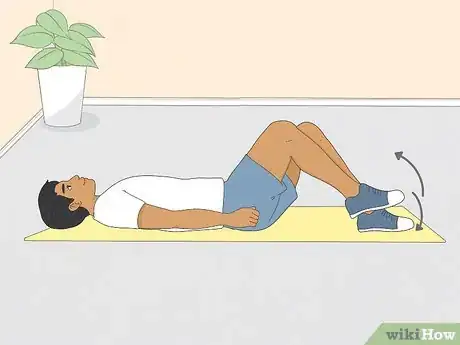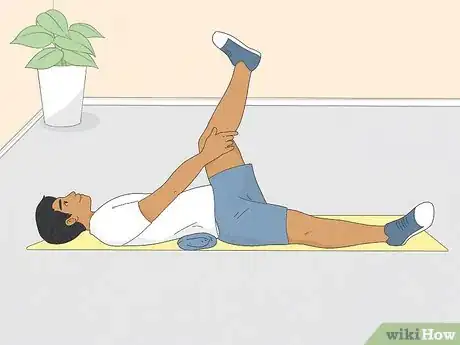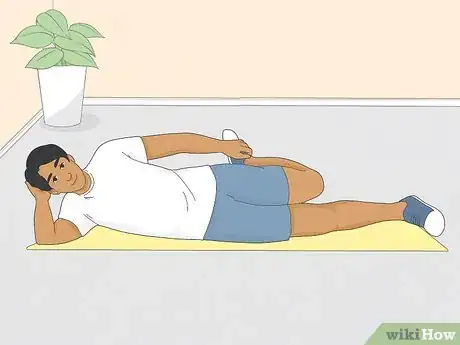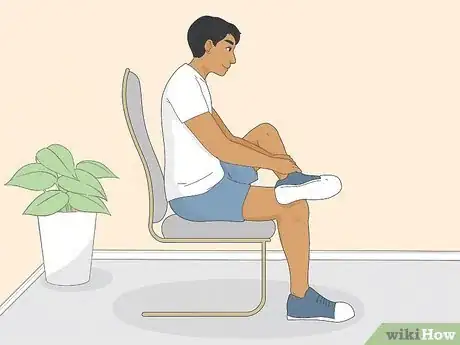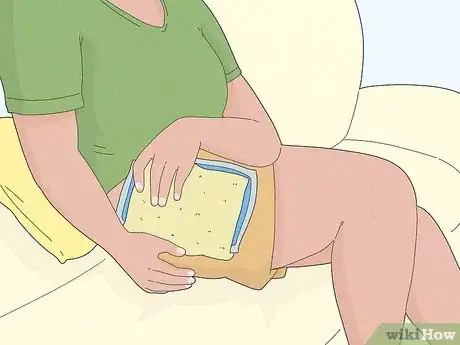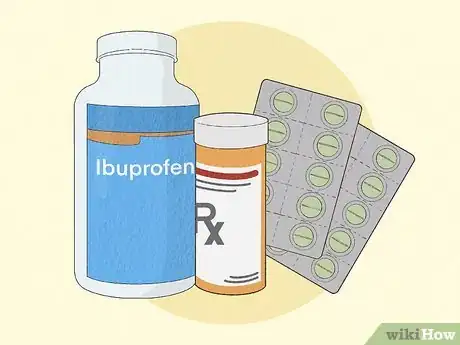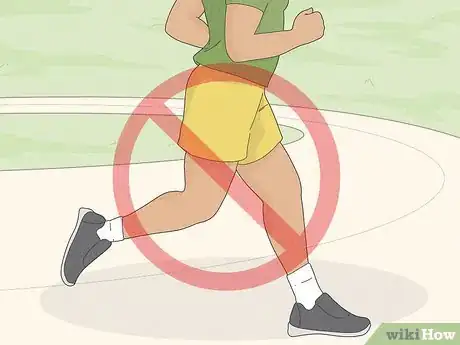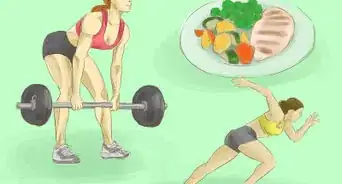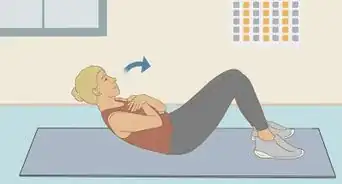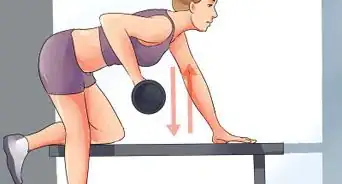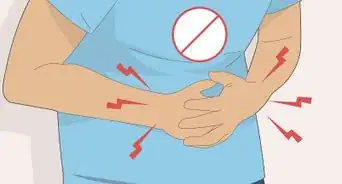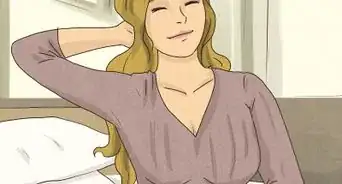This article was co-authored by Monica Morris and by wikiHow staff writer, Janice Tieperman. Monica Morris is an ACE (American Council on Exercise) Certified Personal Trainer based in the San Francisco Bay Area. With over 15 years of fitness training experience, Monica started her own physical training practice and gained her ACE Certification in 2017. Her workouts emphasize proper warm-ups, cool-downs, and stretching techniques.
There are 10 references cited in this article, which can be found at the bottom of the page.
This article has been viewed 11,242 times.
For better or for worse, we can spend a good chunk of the day sitting, whether it’s at work, in a car, or just relaxing at home. If you sit frequently, your body eventually assumes that you don’t need to move your hips that much, which can lead to tightness.[1] Thankfully, there are plenty of easy stretches that can help work those muscles in a safe, healthy way. If you’re dealing with hip tightness due to an injury, like a torn tendon (hip flexor tendonitis) or strained muscles, take time to rest, recover, and regain your strength with the help of a healthcare professional.
Steps
Basic Standing Stretches
-
1Stand up once every 30 minutes if you sit all day. If you have a desk job or another career that requires a lot of sitting, you may not have time for a lot of stretches. Thankfully, you can do your hips a big favor by simply standing up and walking around for 30 seconds! Stretch your hips and reduce tightness naturally by getting a breath of fresh air or walking around to grab a drink of water.[2]
- For every 30 minutes that you work, try standing for 30 seconds.
- See if you can switch to a standing desk setup at your workplace, which might be better for your hips.
-
2Cross your legs to stretch the outside of your hips. Find an open wall in your home that you can stand next to for support. Take your leg that’s closest to the wall and cross it behind your opposite leg. At this point, shift your weight sideways so your hip leans into the wall. Once you feel your hip stretching, hold the position for about 30 seconds. Then, flip around and do the same stretch with your opposite leg.[3]
- Try to do 4 reps of this stretch in total, with 2 for each hip.
Advertisement -
3Lean forward in a kneeling position. Place a padded towel on the ground, and rest your right knee on top. Move your left leg forward, bending it 90 degrees. Hold your right hand at the waist to help keep you steady, while keeping your left hand on your thigh. Lean forward so your weight transfers to your front leg, straightening your back and tightening your abdomen as you go. Try to hold this for about 30 seconds so you can get a good stretch before repeating it with your opposite leg.[4]
- You can do this stretch just about anywhere, as long as you have somewhere comfortable to rest your knee.
-
4Step forward and lunge with 1 leg. Start in a standing lunge position and extend your left leg forward, placing your hands on your hips for balance. While keeping your right leg extended back, bend your left knee and move your butt forward, which creates a nice stretch in your hip. Maintain this stretch for 15 seconds, and then switch legs.[5]
- It may feel a bit weird at first to push your glutes forward. To make it easier, focus on pushing one side of your butt forward. For instance, if your right leg is back, focus on pushing the right side of your butt forward.
Seated or Reclined Stretches
-
1Move your legs as though they’re scissors. Lie face-up on the floor with your knees bent at a right angle and your feet point outwards above the ground. Tighten both your abdomen and glutes, then extend 1 leg forward to create the “scissor” position. Hold this pose for 6 seconds, then repeat the same movement with the opposite leg. Try to do at least 8 total reps between both legs.[6]
- Ideally, your legs will be 30 cm (12 in) or so off the ground.
-
2Lift and lower your legs as though you’re pretending to march. Find an open, comfortable space where you can lie face-up, like on a padded floor or yoga mat. Keep your feet planted firmly on the floor while keeping your knees pointed upwards. While tightening your glutes and abdomen, slowly lift each foot up into the air, as though you’re marching in place. Whenever you raise your foot, hold your leg in place for 6 seconds before switching positions.[7]
- For instance, as you march, lift your right leg in the air first. As you lift your right foot up, hold it in place for 6 seconds before lowering and bringing your left leg up.
- This is a nice, easy recovery exercise if you’ve recently hurt your hips.
-
3Attempt a hamstring stretch while lying down. Lie face-up with your legs stretched out in front of you. Raise your left leg in the air and grab your left thigh with both hands for extra support. Hold this pose for about 30 seconds before switching legs. Overall, try to do 2-4 total reps between both legs.[8]
- If this pose is uncomfortable, a rolled-up towel beneath your back for extra support.
- You can also stretch your hamstrings while standing up! Create a "V" with your legs and reach toward the floor from the center of your body.[9]
-
4Pull your leg behind you to stretch your quads and hips. Lie on your side, leaving your right leg fully extended. Lift up your left leg and pull your ankle towards your butt, which will create a dynamic stretch. Hold this position for up to 30 seconds, then flip over and try it with your opposite leg. Overall, try to do this 2-4 times between both legs.[10]
- Don’t try this stretch if you’ve had knee issues in the past.
-
5Pull your ankle over your opposite knee while you’re seated. Find a comfortable chair where you can easily sit up straight. Lift up your right leg and balance your ankle on top of your left knee. Straighten your back and lean towards your leg, which creates a really powerful stretch. Hold this position for at least 10 seconds, then lean back to your original position.[11]
- Try to do 8-10 reps of this stretch on each leg.
- The further you lean forward, the bigger the stretch you’ll create.
Recovering from an Injury
-
1Talk to a doctor for guidance about rehab and recovery. If you suspect that you’ve injured your hip muscles or tendons in some way, talk to a medical professional first. They can give you a more accurate diagnosis, and recommend a recovery plan that’s realistic for your lifestyle.[12]
- If you’re dealing with a really bad injury, you may want to consult a physical therapist for help.
- Don’t hesitate to call a doctor if you ever have concerns while you’re recovering.
-
2Apply ice for 20 minutes once every 3-4 hours. Don’t apply any ice directly to your skin—instead, wrap it up with a towel or cloth before placing it over the sore spot. Leave the ice in place for up to 20 minutes, using it once every 3 or so hours if you need it. You’ll only need to use ice for the first 2-3 days of the injury.[13]
-
3Take over-the-counter medication to treat your pain. Pick up a bottle of ibuprofen, aspirin, or acetaminophen if your hip pain is really bad. Follow the recommended dosage instructions, taking the medication on an as-needed basis.[14]
- Call your doctor if you take any medicines that could negatively interfere with certain conditions like high blood pressure, heart disease, or kidney disease.
-
4Rest up so your injury can heal. Stay away from any kind of strenuous exercise that requires a lot of effort from your hip area, like swimming or running. Listen to your body as you about your day—if you ever feel any pain or discomfort, scale down your activity so you can stay comfortable.[15]
- Talk to your doctor or physical therapist about your physical activity options. They might have some safe, gradual exercises you can try as you go about your recovery!
Expert Q&A
-
QuestionWhat causes tightness in the hips and legs?
 Monica MorrisMonica Morris is an ACE (American Council on Exercise) Certified Personal Trainer based in the San Francisco Bay Area. With over 15 years of fitness training experience, Monica started her own physical training practice and gained her ACE Certification in 2017. Her workouts emphasize proper warm-ups, cool-downs, and stretching techniques.
Monica MorrisMonica Morris is an ACE (American Council on Exercise) Certified Personal Trainer based in the San Francisco Bay Area. With over 15 years of fitness training experience, Monica started her own physical training practice and gained her ACE Certification in 2017. Her workouts emphasize proper warm-ups, cool-downs, and stretching techniques.
ACE Certified Personal Trainer Your legs and hips are the moving force behind what you throughout the day, like walking and lifting. Because of this, your legs and hips can get pretty tight.
Your legs and hips are the moving force behind what you throughout the day, like walking and lifting. Because of this, your legs and hips can get pretty tight. -
QuestionHow do you stretch your hips?
 Monica MorrisMonica Morris is an ACE (American Council on Exercise) Certified Personal Trainer based in the San Francisco Bay Area. With over 15 years of fitness training experience, Monica started her own physical training practice and gained her ACE Certification in 2017. Her workouts emphasize proper warm-ups, cool-downs, and stretching techniques.
Monica MorrisMonica Morris is an ACE (American Council on Exercise) Certified Personal Trainer based in the San Francisco Bay Area. With over 15 years of fitness training experience, Monica started her own physical training practice and gained her ACE Certification in 2017. Her workouts emphasize proper warm-ups, cool-downs, and stretching techniques.
ACE Certified Personal Trainer Stand close to the wall with a stool placed nearby. Lift and prop one of your legs onto the stool. Then, reach toward your propped foot, move sideways, and reach for the foot that's on the floor. This should give the inside of your hips a good stretch.
Stand close to the wall with a stool placed nearby. Lift and prop one of your legs onto the stool. Then, reach toward your propped foot, move sideways, and reach for the foot that's on the floor. This should give the inside of your hips a good stretch.
Warnings
- Avoid carrying heavy items on your back, if you can. This can cause your hips to be uneven.[17]⧼thumbs_response⧽
References
- ↑ https://www.franciscanhealth.org/news-and-events/news/what-causes-hip-pain-after-sitting-and-what-do
- ↑ https://www.hss.edu/newsroom_jamie-edelsten-daily-burn-hip-flexors.asp
- ↑ https://orthoinfo.aaos.org/globalassets/pdfs/2017-rehab_hip.pdf
- ↑ https://www.mayoclinic.org/healthy-lifestyle/fitness/multimedia/stretching/sls-20076840?s=5
- ↑ https://www.nhs.uk/live-well/exercise/how-to-stretch-after-a-run/#hip-flexor-stretch
- ↑ https://myhealth.alberta.ca/Health/aftercareinformation/pages/conditions.aspx?hwid=bo1616
- ↑ https://myhealth.alberta.ca/Health/aftercareinformation/pages/conditions.aspx?hwid=bo1616
- ↑ https://orthoinfo.aaos.org/globalassets/pdfs/2017-rehab_hip.pdf
- ↑ Monica Morris. Certified Personal Trainer. Expert Interview. 18 November 2019.
- ↑ https://myhealth.alberta.ca/Health/aftercareinformation/pages/conditions.aspx?hwid=bo1616
- ↑ https://www.eskenazihealth.edu/news/exercise-of-the-month-seated-hip-flexor-stretch
- ↑ https://medlineplus.gov/ency/patientinstructions/000682.htm
- ↑ https://medlineplus.gov/ency/patientinstructions/000682.htm
- ↑ https://medlineplus.gov/ency/patientinstructions/000682.htm
- ↑ https://medlineplus.gov/ency/patientinstructions/000682.htm
- ↑ https://medlineplus.gov/ency/patientinstructions/000682.htm
- ↑ https://www.nhs.uk/live-well/exercise/common-posture-mistakes-and-fixes/


